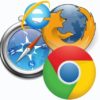When you install new applications for your Windows computer, you may have noticed that new shortcut icons have appeared on the desktop. These shortcuts have the same icon as the file, folder or program they’re pointing to, but they have small, curled arrows in the lower-left corner. Through them, you save time that would’ve been wasted on going through Windows Explorer to find your files and programs in their default locations. Here’s how you can manually create shortcuts and use them to quickly open your favorite files, folders, and programs.
Open Windows Explorer and navigate to the location of your file or folder that you want to create a shortcut for, right-click it and select Create Shortcut. The newly created shortcut should appear in the same location of your file or folder. It’s characterized by the curled arrow and a “- Shortcut” suffixed to its name. Move the shortcut to a convenient location. If a “Windows can’t create a shortcut here” error message appears instead, click Yes to place the shortcut on the desktop.
Alternately, select the Send To option in the right-click context menu and select Desktop (create shortcut) to send the shortcut directly to the desktop. You can also create a shortcut in the Start menu and taskbar by clicking and dragging the file or folder into them.
Creating shortcuts in Windows 8 and 8.1 is exactly the same as how you do it in Windows 7. However, no option for a Start menu shortcut is available because these newer Windows versions use the Start screen. To create a Start screen shortcut, right-click the file or folder and select Pin to Start.
Another method to create a shortcut is by going directly to the convenient location that you want to place your shortcuts. Right-click any empty space of said location, select New and then select Shortcut. In the Create Shortcut dialog box, browse for or type the location of the item, click Next, type the name for the shortcut and click Finish.
Shortcuts to websites are also available. To create one, open the website you want to create a shortcut for, click and hold the icon on the left side of the Web browser’s address bar, drag the icon towards the right side of the taskbar (specifically to the right of the system tray clock) to minimize all windows, drag the icon to the desktop and release the left mouse button.
The next time you need to open your programs, you can use their shortcuts instead to save time. Note that filling your desktop with too many shortcuts isn’t recommended. To avoid clutter, only create shortcuts for your frequently used files, folders, and programs and delete the unnecessary ones.


